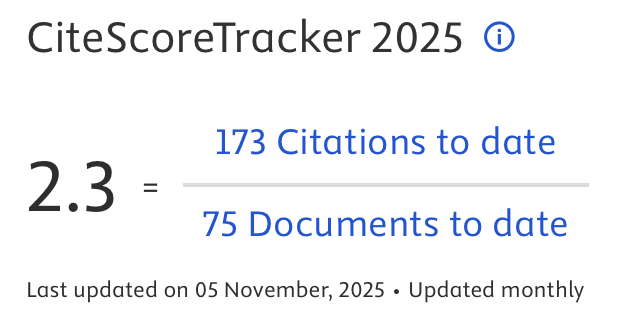RESEPSI ESTETIS QUR’ANI DALAM MUSIK ROCK SHOLAWAT ROFA BAND DI BANTUL YOGYAKARTA
DOI:
https://doi.org/10.14421/qh.2019.2002-04Keywords:
Resepsi, Tradisi, Living Qur’an, Transmisi, TransformsiAbstract
A Muslim’s interaction with the Quran directly both verbally, in writing, and with the form of practice results in different experiences arising in each individual. The process which then gave birth to traditions and various kinds of receptions on understanding the meaning of the verses of the Quran. From this phenomenon the author tries to examine the aesthetic reception of a Kyai in Islamic boarding school Rouḍotul Fatiḥâh on the art of music in a music community called the Rofa Band. To find out the background of the creation of the Rofa Band and the meaning of the songs delivered. Also tried to reveal from the aspect of how scientific transmission and transformation carried out by KH. Fuad Riyadi related it to the reception of the Quran verses in the practice of Rofa Band. As a theoretical basis, researchers use a theory conceived by Peter L. Berger and Thomas Luckmann which states that social construction is inseparable from the historical process that connects traditional spaces. The results of the research by the author show that the reason for the formation of Rofa Band by Gus Fuad was motivated by Gus Fuad’s anxiety about the rise of the influence of Western music for the community, secondly, encouragement from one of his teachers, and third, Gus Fuad’s desire to convey the message of the Prophet’s love through the art of music. The meaning of the Rofa Band songs that Gus Fuad wants to convey the magnitude of the love and love of the Apostle to his people.
Keyword: Reception, Tradition, Living Quran, Transmission, Transformation
 Abstract viewed: 1055 times
|
Abstract viewed: 1055 times
|
 PDF downloaded = 1297 times
PDF downloaded = 1297 times
References
Am, Mirhan. KH. Muhammad Zaini Abdul Ghani. Banjarmasin: Antasari Press, 2008.
Andre. Wawancara. Yogyakarta. 9 Agustus 2019.
Cakka Nuraga, Wawancara, Yogyakarta, 15 September 2019.
Datur. “K.H Muhammad Zaini Abdul Ghani dan Peranannya dalam mengembangkan Agama Islam di Desa Jawa, Martapura, Kalimantan Selatan 1990-2005”. Skripsi—UIN Sunan Kalijaga, 2007.
Esack, Farid. The Quran: A Short Introduction. London: Oneworld Publication, 2002.
Huda, Sokhi. Tasawuf Kultural: Fenomena Salawat Wahidiyah. Yogyakarta: LkiS, 2008.
Mustaqim, Abdul. Metode Penelitian al-Qur’an dan Tafsir. Yogyakarta: CV. Idea Sejahtera, 2015.
Rassmussen, Anne K Merayakan Islam dengan Irama. Bandung: Mizan Pustaka, 2019.
Ririn dan Ayu. Wawancara. Yogyakarta. 29 Agustus 2019.
Riyadi, M. Fuad. Wawancara. Yogyakarta. 11 Agustus 2019.
Sigit. Wawancara. Yogyakarta. 9 Agustus 2019.
Sukmawan Samudera. Wawancara. Yogyakarta. 13 September 2019.
Supri dan Rusdi. Wawancara. Yogyakarta. 29 Agustus 2019.
Tim Dosen Tafsir Hadis Fakultas Ushuluddin UIN Sunan Kalijaga. Metodologi Penelitian Living Qur’an dan Hadis. Yogyakarta: Penerbit Teras, 2007.
Tim Peneliti Fakultas Ushuluddin. Pemikiran Keagamaan KH. Muhammad Zaini Abdul Ghani. Banjarmasin: Fakultas Ushuluddin, 2000.
Downloads
Published
How to Cite
Issue
Section
License
Publishing your paper with Jurnal Studi Ilmu-ilmu al-Qur'an dan Hadis means that the author or authors retain the copyright in the paper. Jurnal Studi Ilmu-ilmu al-Qur'an dan Hadis uses license CC-BY-NC-ND or an equivalent license as the optimal license for the publication, distribution, use, and reuse of scholarly works. This license permits anyone to copy and redistribute the material in any medium or format and must give appropriate credit, provide a link to the license, and indicate if changes were made. If you remix, translate, transform or build upon the material you may use it for private use only and not for distribution. Jurnal Studi Ilmu-ilmu al-Qur'an dan Hadis granted an exclusive non-commercial reuse license by the author(s), but the author(s) are able to put the paper onto a website, distribute it to colleagues, give it to students, use it in your thesis, etc, so long as the use is not directed at a commercial advantage or toward private monetary gain. The author(s) can reuse the figures and tables and other information contained in their paper published by Jurnal Studi Ilmu-ilmu al-Qur'an dan Hadis in future papers or work without having to ask anyone for permission, provided that the figures, tables, or other information that is included in the new paper or work properly references the published paper as the source of the figures, tables or other information, and the new paper or work is not direct at a private monetary gain or commercial advantage.
Jurnal Studi Ilmu-ilmu al-Qur'an dan Hadis journal Open Acces articles are distrubuted under the Creative Commons Attribution-NonCommercial-NoDerivatives 4.0 International (CC BY-NC-ND 4.0). Article can be read, copy and redistribute the material ini any medium or format under the following conditions:
Attribution — You must give appropriate credit, provide a link to the license, and indicate if changes were made. You may do so in any reasonable manner, but not in any way that suggests the licensor endorses you or your use.
NonCommercial — You may not use the material for commercial purposes.
NoDerivatives — If you remix, transform, or build upon the material, you may not distribute the modified material.









